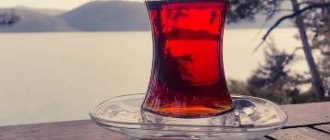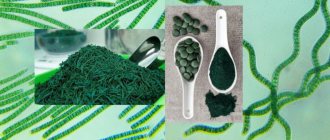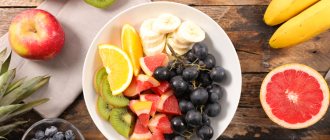What to drink tea with?
What to drink tea with?
No matter how much of a gourmet we consider ourselves to be, you can’t argue with genetic memory: no, no, yes, you’re tempted to eat oolong with delicious buns, and pu-erh with honey and jam. The British still drink strong black tea with sugar, milk and lemon - and nothing, they don’t frown. Different countries and different generations have their own tea drinking traditions. Maybe there are some things worth adopting? Let's delve into the question.
The Japanese, Chinese, Vietnamese and Taiwanese have similar traditions when it comes to tea: here it is customary to drink the drink in its pure form, without any “impurities”. In countries with ancient tea culture, the focus is on the aroma and taste of the infusion, which can have hundreds of shades. Here, if anything is added, it is only natural flavors: for example, jasmine or mint.
Indians are much more democratic in this regard: they add milk, sugar, and lemon to tea. Masala tea is a drink where tea is only guessed at, the rest is milk and spices. Turks and Iranians behave in a similar way with tea: they add allspice, star anise, ginger, cardamom; Nuts and dried fruits and oriental sweets are served with tea. And they drink mostly very strong black (red) tea - Indian or Ceylon.
In North Africa (Arab countries) they prefer green teas, to which they add mint and sometimes sugar. In hot weather, tea is mixed with citrus juice and ice to refresh.
In Europe, tea traditions are set by the British: their five-o'clock is as immutable a ritual as the changing of the guard at Buckingham Palace. We have already mentioned that in the UK they drink tea with anything: sugar, milk, sweets. In this way the British are similar to the Indians.
Rus' also had its own ceremonies: they set a samovar for the whole family, brewed strong black tea and drank from saucers, snacking on lump sugar, pies, bagels, jam and honey.
Actually, we are not far from our ancestors: in most families they drink tea with sugar, lemon and sweets. By the way, lemon is considered a purely Russian “invention”: they first started drinking tea this way here, in the 19th century, and only then in other countries. However, in the Middle East, citrus fruits are also often added to tea: oranges, lemons, grapefruits. But in our case, it’s not even a matter of taste, but the fact that lemon in those days was a sign of wealth, and it was served on every occasion (like sugar), showing its status.
So which combination is right?
Sugar softens the taste of strong black tea, and in this form it is healthier for the stomach, and also stimulates brain function. But it also absorbs valuable vitamin B1, and also “muffles” shades of taste and aroma - if the tea is really good. Let’s keep silent about the harm to teeth and figure. The same story with sweets (sweets, nougat, marmalade, jam): all of them do not allow you to fully experience the rich taste. If you are used to eating sweet tea, try alternating first: a sip of tea - a piece of sweets, trying to taste the taste. Gradually, you can replace sweets with dried fruits or honey, which are much healthier.
By the way, chocolate with tea is very good for brain function and blood pressure - but only bitter.
Honey is a harmless alternative to sugar: you can add it directly to tea or eat it as a drink. Honey helps to lose weight: it contains the hormone orexin, which starts metabolism and breaks down fats. It’s not for nothing that our grandmothers and mothers gave us tea with honey: it really helps with colds, increasing sweating. Honey is best absorbed with green tea or oolong tea, but it should be added to slightly cooled, not hot tea (40-50 degrees) - then the healing properties of honey will not be affected.
Often tea is drunk with cakes, pies and sandwiches. In this case, drink tea with flour instead of water or juice. It is difficult to do without carbohydrates, but remember: flour, like sweets, does not allow you to feel all the shades of tea taste and its healing effect. To prevent this from happening, drink more tea if you eat sandwiches or pies - this will help digest food that is difficult for the body and invigorate you. For the same reason, it is better to drink very strong tea with flour tea - red or aged pu-erh.
Milk, like sugar, softens strong tea and removes excess bitterness. But this can be avoided by proper brewing: do not add too much tea and do not steep it for longer than 2 minutes. Then the tea bouquet will not suffer, as is the case with milk (although much less than due to sweets).
The British and Asians—Mongolians and Indians—love to drink tea with milk, adding spices and spices to the mixture (masala tea). But here we are talking about another drink, so there is no particular point in “sniffing” the tea bouquet: it is drowned out by the spices.
If we ignore the taste, then milk in tea is more good than bad: it contains more than 100 useful substances, including 20 vitamins and easily digestible protein. In combination with tea, milk is also better absorbed than separately; it stimulates all body systems and strengthens them. The only negative is that milk reduces the tonic effect. To preserve all the benefits, add milk slightly warmed up (up to 40-60 degrees), and brew strong tea (green is also suitable).
Tea with fruit is drunk both for taste (natural flavoring) and for benefits. It works well in both cases: the fruits do not interrupt, but even enhance the taste of the tea and are really healthy, especially in their natural form. Moreover, the combination of taste and benefits is easy to regulate: dried fruits and jams are sweeter and tastier, but also less healthy. In this case, tea helps deliver fruit acids - citric, ascorbic, malic - to the necessary organs without irritating the mucous membranes. But don’t get carried away: if you add dried fruits directly to tea or eat too much of them, the taste and properties of the tea itself will suffer.
Tea with citrus fruits is a very healthy drink that quenches thirst, tones, and strengthens the body. Tea with lemon helps you escape the heat and keep you warm in the cold; the antioxidants in the composition help remove harmful substances in case of poisoning or hangover. But lemon has a rather negative effect on the taste of tea: the acid overpowers all other shades. At the same time, lemon does not reduce the nutritional or healing properties or even the strength of tea.
The spices of the tea help to open up, adding new notes and giving a very rich aroma. Most often, ginger, cumin, mint, star anise, and pepper are added, which stimulate blood circulation, help the brain and immunity, tone, and improve digestion. Ginger is especially useful, which in the east is used for literally everything. But it’s easy to overdo it with spices, and then the taste and aroma will be lost.
Tea based drinks
- Egg tea, or Castaird , is a traditional British drink. In addition to the tea itself, Casterda contains egg yolks and cream. To prepare, you need to take a liter kettle: Indian black tea in the amount of 5 spoons (or six if you like it stronger) is poured with 100 grams of boiling water. Immediately add 500 grams of boiling cream, previously brought to condition in a separate container, into a common container. The brew should sit for at least 10 minutes, during which time 4 yolks are ground with sugar (125 g). The egg-sugar mixture is diluted with tea (about half a glass) and poured into a teapot. Be sure to stir the Castard long and hard with a spoon, for at least several minutes, to prevent the eggs from curdling. The mixture is left alone for 3 minutes, after which it is poured into cups and drunk while hot. The body will not only enjoy a healthy drink with a unique taste, but will also receive a powerful nutritious charge of energy.
- Grog is the alcoholic version of tea. Grog was also invented by the British, and specifically by the sailors, who were ordered by Admiral Vernon (nicknamed Grog, of course) to replace their daily portion of alcohol with alcohol and tea. According to the classic recipe, grog is prepared as follows: brew black tea to a strength of 50 grams of dry tea leaves per liter of water. At the same time, boil water with sugar and rum until the sugar dissolves. It is possible to add spices to taste: cinnamon, cloves, pepper - either during boiling or in the finished drink. Strong hot grog is an excellent prevention against colds, has a stimulating effect on the cardiovascular system, and helps with hypothermia and fatigue.
- Tea jelly is one of the few tea-based delicacies that is served and consumed cold. To prepare you need to take: tea (both green and black), sugar, starch, fruit juice, vanilla. Next, brew tea of standard strength, dissolve a lot of sugar, and add starch. Stir the mixture thoroughly until thickened. Then diluted with fruit juice and cooled.
Who is tea contraindicated for?
Despite all the usefulness of this product, not everyone can consume it (especially in large quantities). First of all, this concerns children. They can drink tea rarely, but it should not be strong or cold. Drinking plenty of fluids is definitely beneficial. But this only applies to water. But tea, having a diuretic effect, will only increase the load on the child’s kidneys and heart. Pregnant women should not drink tea either, as the caffeine contained in tea leaves can adversely affect the development of the fetus. It is also not recommended to abuse tea for patients with stomach ulcers, duodenal pathology and high acidity in the stomach. Hypertensive patients and atherosclerotic patients should refrain from frequent tea drinking. They especially should not overuse red and strongly brewed tea. You should not drink tea before bed, as the stimulating effect of aromatic substances and caffeine can cause insomnia. Contrary to popular belief, you should never drink hot tea at elevated temperatures. The theophylline it contains has a diuretic effect and reduces the effectiveness of antipyretic drugs.
Cuban tea punch
You will need:
- water – 500 ml;
- orange juice – 1 glass;
- ground cloves – 1 g;
- black tea – 30 g;
- grapefruit juice – 1 glass;
- canned pineapple – 250 g;
- sugar – 100 g;
- lemon – 1 pc.
Brew tea and cloves, let it brew for 5 minutes, then strain through a strainer. Add juices, sugar and sliced pineapple. Place the pan with the drink on the fire and heat until steam appears above the surface. Then remove from heat and serve.
Tea is different from tea
It’s a paradox, but all the invented “optimizing” methods of brewing tea (such as tea bags) only make the tea worse.
The best option for purchasing is always considered to be the classic packaging of loose leaf tea: green, black or red. Good tea always meets the following parameters: 1. Black tea has a rich, dark golden hue, green tea has a light golden hue, red tea should have a light pinkish tint. 2. The tea leaves in it are shiny and of the same size, and can be easily ground into powder with your fingers. 3. The smell of tea should be fresh and pleasant. 4. There should be no small particles or dust in the packaging at all. The main tea producing countries today are India, Sri Lanka and China. Therefore, choose tea brought from these countries. Photo: flickr.com Tags:
- Tea
1 comment • To leave a comment you must be an authorized user
- sonoscape the question of the benefits of tea is always relevant, and yet it is more important for the body to drink more pure living water
Beneficial properties of tea
The main beneficial effect of tea on the body is protection against diseases. In addition, the large amount of antioxidants contained in tea slows down the aging of the body. The fluoride content in tea leaves helps strengthen human teeth, bones and nails. Caffeine, which is even higher in black tea than in coffee, improves metabolism, increases activity and promotes weight loss. Vitamin P, also contained in tea leaves, strengthens blood vessels. It is not only the drinking of tea itself that is important, but also how we do it. Drinking tea calmly (and not swallowing in a hurry) helps to relax the body and improve respiratory function (breathing becomes calmer and deeper). This increases oxygen consumption and stimulates brain activity.









